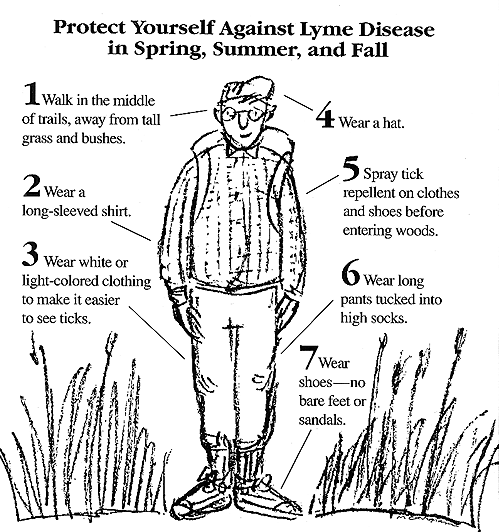Lyme disease and Climate Change
Lyme disease and Climate Change-New Findings
Historically, Lyme disease is heavily present in the Northeastern United States due to its moderate climate. The feeding period of these ticks in the northeast is being prolonged due to the extended summer temperatures, allowing more time for uninfected larval ticks to become a carrier of the Lyme disease-causing bacteria. Researchers at Yale University have seen clear implications that as the planet warms, more reports of Lyme disease will be expected in the upper Midwest to match the amount of cases in the upper Northeast.
Lyme disease and Climate Change-Borrelia burgdorferi
Borrelia burgdorferi is the name of the bacteria that causes Lyme disease and the nymphal deer tick is the carrier of this pathogen, contracting it from its blood meal. When a pathogen carrying tick bites, the bacteria enters the bloodstream and the victim becomes infected
Lyme disease and Climate Change-Transportation of Lyme disease
Deer ticks have an average two year life span, with three main life stages larval, nymphal and adult. They obtain one meal consisting of blood during each main life phase in order to survive. If the source of their meal is infected with the Lyme disease-causing bacteria (Borrelia burgdorferi) then it is passed onto the tick. In the tick’s nymphal stage, it passes the infection to its next meal source human or other animal. This feeding cycle is seasonal and innately influenced by climate.
Lyme disease and Climate Change-How Lyme Enters the Food Chain
At the propagation of the larval deer tick is born it is not born as a carrier of the disease. The ticks need to obtain sustenance in order to survive; this nutrition comes in the form of a blood meal which they obtain by sucking the blood of other animals. If the larval tick gets a blood meal from a deer or in a more likely case, a mouse already carrying the disease, the larval tick is then infected with B. burgdorferi.
In order to reach the next phase of the tick’s life, the tick must obtain another blood meal in its nymphal stage, and in the feeding process the tick passes the pathogen on to its meal source, which in some cases is a human. The human will, as a result, become a host for the pathogen. Deer have been the main suspect in being the carrier of the B. burgdorferi, but research shows that this may not be the case because the deer has the ability to flush the disease out of its system. The new suspect is the white-footed mouse, whose body does not entirely dispose of the bacteria.
Lyme disease and Climate Change-What Climate Change means for Lyme disease?
Climate change will have the following effects on Lyme disease: An acceleration of the tick’s developmental cycle, a prolonged developmental cycle, increased egg production, increased population density, and a broader range of risk areas. The ideal habitat for these disease-carrying ticks is one with 85% humidity and a temperature higher than 45°F. The tick finds a suitable microclimate by using its thermo receptors.
Once the larvae have molted into the nymphal stage, the winter forces them to remain dormant until spring. An adult tick no longer needs to hibernate during the winter, so these ticks may become active on warm winter days, yielding a larger nymph population the following year. With an earlier winter thawing, nymphal-staged ticks will become active sooner. The warmer winters will also allow for a higher survival rate of the white-footed mouse, a popular host for the ticks, meaning an increased tick population in the spring and summer.
After discovering how global warming could impact on infectious disease, scientists from Yale University, in collaboration with other institutions, have determined that climate impacts the severity of Lyme disease by influencing the feeding patterns of deer ticks that carry and transmit it.
But, as the Yale team demonstrates, it’s the seasonal cycle of feeding for each stage of the tick’s life that determines the severity of infection in a given region. The researchers found that this cycle is heavily influenced by climate. In the moderate climate of the Northeastern United States, larval deer ticks feed in the late summer, long after the spring feeding of infected nymphs. This long gap between feeding times directly correlates to more cases of Lyme disease reported in the Northeast by the scientists.
When there is a longer gap, the most persistent infections are more likely to survive. These persistent bacterial strains cause more severe disease in humans, leading more people to seek medical attention and resulting in more cases.
But in the Midwest, where there are greater extremes of temperature, there is a shorter window of opportunity for tick feeding, and therefore a shorter gap between nymphal and larval feedings. Due to this, Midwestern wildlife and ticks are infected with less persistent strains, which correlates with fewer cases of Lyme disease reported in the Midwest.
The clear implication of this research is that, as the planet warms, the Upper Midwest could find itself in the same situation as the Northeast: longer gaps between nymphal and larval feeding, and therefore, stronger, more persistent strains of Lyme disease. Other diseases, like malaria, have also been projected to expand in response to climate change, but this is the first study to show how the severity of disease can also be related to climate.
Lyme disease and Climate Change-New Findings





